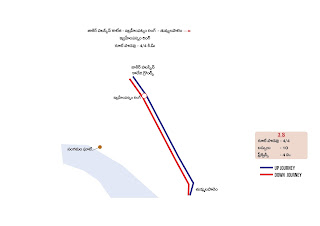Kaveri Pushkaram is a festival of River Kaveri that normally occurs once in 12 years. This Pushkaram is observed for a period of 13 days from the time of entry of Jupiter into Tula rasi (Libra)
Kaveri Pushkaram
Start Date: 12th September 2017
End Date: 23rd September 2017
Number of Days Celebrated: 12 Days
The Kaveri is also called as ‘Cauvery’ in English, is a large river in India. It rises on Brahmagiri Hill of the Western Ghats in southwestern Karnataka state, flows in a southeastern direction for 475 miles through the states of Karnataka and Tamil Nadu, and descends the Eastern Ghats in a series of great falls and finally surrenders in the Bay of Bengal through two principal mouths.
Pushkaram is an Indian festival dedicated to worshiping of rivers. It is also known as Pushkaralu (in Telugu), Pushkara or Pushkar.
Pushkaralu is celebrated at shrines along the banks of 12 major sacred rivers in India, in the form of ancestor worship, devotional music and cultural programmes, spiritual discourses. Pushkaralu celebration happens annually, once in 12 years along each river. Each river is associated with a zodiac sign, and the river for each year’s festival is based on which sign Jupiter is in at the time. Due to regional variations, some of the zodiac signs are associated with multiple rivers.
Tula Libra Kaveri, Kaveri Pushkaram
It has many tributaries namely, Shimsha, the Hemavati River, the Arkavathy River, Honnuhole River, Lakshmana Tirtha River, Kabini River, Bhavani River, the Lokapavani River, the Noyyal River and the Amaravati River. As the river flows in the Deccan Plateau, it forms two islands, Srirangapatna and Shivanasamudra.
Kaveri river breaks into a large number of distributaries forming a wide delta called the “garden of southern India.” Known to devout Hindus as Daksina Ganga (“Ganges of the South”), the Kaveri River is celebrated for its scenery and sanctity in Tamil literature, and its entire course is considered holy ground. The river is also important for its irrigation canal projects.
Kaveri river also joins the Hogenakal Falls before arriving in the town of Hogenakal and Srirangam in Tamil Nadu. It then meanders in the southern plains and in the Thanjavur district rich, silt-laden river delta is formed before it falls into the Bay of Bengal.
The river water is the source of extensive irrigation project and for the generation of hydroelectric power. Dams constructed across the river are Krishna Raja Sagara Dam and Mettur Dam and the Banasura Sagar Dam on the Kabini River, which is the tributary of the Cauvery. This sacrosanct river has been mentioned in Tamil literature. A large number of temple towns are situated in the lower course of the Cauvery River in Tamil Nadu.
After sweeping past the historic rock of Tiruchchirappalli, the Kaveri breaks at Srirangam Island, a major pilgrimage centre. There, in eastern Tamil Nadu state, its braided and extensively irrigated deltaic region of about 4,000 square miles (10,360 square km) begins. A dam called the Grand Anicut was built in the 2nd century at the point where the river divides. A second dam (1836–38) across the Kollidam River, the Kaveri’s northern and larger channel, saved the old system from silting and extended irrigation.
The open roadsteads of Nagapatnam and Karikal are on the seaward side of the delta. The Kaveri’s main tributaries are the Kabani, Amaravati, Noyil, and Bhavani rivers.
The history of Kaveri River dates back to its origin. The Kaveri River is one of the sacred rivers of the country. Kaveri or Cauvery is among the most sacred rivers of India and though to be the Dakshina Ganga or Ganga of the South.
The Hindu Mythology says several versions about the descent of River Kaveri. The most popular one is that a king by the name of Kavera lived in the Brahmagiri hills and prayed to Lord Brahma for a child. He was blessed with a daughter whom he named Kaveri. She was the water manifestation of the human form. The great sage Agastya married her and kept her in his kamandalu or the spouted jug. When a terrible drought trounced the land, Ganesha in the guise of a crow, tipped the kamandalu and out flowed Kaveri.

















